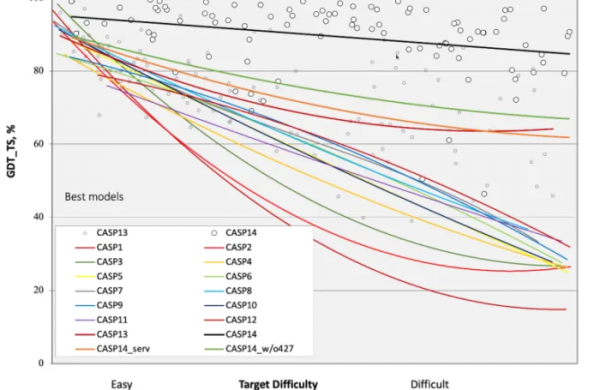The past year was unusual for many reasons. What are the most innovative achievements in the area of AI, ML and Big Data of 2020? What will 2021 bring? These questions are answered by QED Software specialists: Piotr Biczyk, Daniel Kałuża, Alina Powała and Maciej Świechowski.
Achievements in 2020 in the area of machine learning and artificial intelligence
MACIEJ ŚWIECHOWSKI:
Although a lot has happened in 2020, there is no clear winner in my personal ranking of the most pertinent breakthroughs of the year. Of course, the efforts related to data analysis around SARS-CoV-2 cannot be overlooked, but outside the pandemic, I would like to highlight two topics.
The first is advances in image processing and computer vision: “Deep Residual Learning for Image Recognition” was the highest cited work in computer science in 2020. The results obtained by nVidia in the field of GAN (Generative Adversarial Networks) also deserve attention:
https://www.engadget.com/nvidia-ada-gan-ai-190518240.html
https://blogs.nvidia.com/blog/2020/12/07/neurips-research-limited-data-gan/
The methods developed by nVidia allow, for instance, for the reconstruction of historical images based on a very small input sample.
That they operate in an ethical and socially responsible manner.

The second topic is the development of AI / ML methods that help researchers in fields such as physics and chemistry.
Many Nobel Prizes in these fields, such as the 2020 “CRISPR / Cas9” Genetic Engineering Prize, would not have been possible without the support of artificial intelligence. I was personally inspired by the work from 2018 entitled “Planning chemical syntheses with deep neural networks and symbolic AI”, which combines algorithms used in artificial intelligence in games with deep neural networks and symbolic rules, i.e. rules of chemical reactions. These neural networks have been trained using 79% of all types of known chemical reactions. It sounds fascinating and heralds a time of artificial superintelligence that will feed on knowledge known to mankind to come up with new inventions.
DANIEL KAŁUŻA:
In 2020 I was impressed by the model created by DeepMind called AlphaFold 2, which won this year’s CASP14 protein structure prediction competition.
To understand it, let’s start by describing the problem of protein structure prediction itself. At the entrance, we have a one-dimensional sequence of amino acids that make up a given protein and the task for the model is to predict what three-dimensional structure this protein will actually achieve, i.e. how its pieces will be folded. This is a problem that bioinformatics has been grappling with for 50 years and is of key importance to medicine. Thanks to a good and quick estimation of protein structure, we could accelerate the discovery of new drugs and enzymes needed in biotechnology.
In 2020, DeepMind’s team achieved shocking results in the competition and conference devoted to the topic of Critical Assessment of protein Structure Prediction (CASP). Using End to End deep learning, they scored 92.4 out of 100 on the “Global distance test” metric used in the competition. One can think about this result that 92.4% of the specified carbon atoms in the structures predicted by the model were in close proximity to the places obtained as a result of experiments and research (reference structures). The structures on which the participants of the competition make predictions are the result of the latest research and in each edition of the competition were not previously available to the public. Example of a matched structure with a reference value (blue AlphaFold2, red target):

All the key elements of the structure were well captured by the model and most of the elements correctly match the reference structure.
You can see the significant advantage of this model over the model from the previous edition of the competition:

Two examples from conferences that show the quality of the predictions obtained and the real usability of the model are also worth mentioning.
The research group of Professor Osnat Herzberg, after seeing the AlphaFold 2 predictions that were different from the results they had obtained during the experiments, decided to re-examine their analysis. It turned out that they had made a mistake in interpreting the results of their experiments.
The second example is the research group of Dr. Henning Tidow, which, thanks to model prediction, solved the research problem she had been working on for 2 years. After getting to know the structure predicted by the model, they solved it within hours.
Reference:
https://deepmind.com/blog/article/alphafold-a-solution-to-a-50-year-old-grand-challenge-in-biology
https://en.wikipedia.org/wiki/AlphaFold
ALINA POWAŁA:
Like Daniel Kałuża, I believe Alpha Fold 2, the achievement of the Deep Mind group, was a unique event for Artificial Intelligence in 2020. Being able to accurately predict protein structures from their amino acid sequences is one of the most important goals of computational biology. This is important especially for medicine in the context of accelerating new drugs development. Artificial Intelligence has shown its strength, but also its servant role in relation to other branches of science.
PIOTR BICZYK:
For me, the most important changes in 2020 took place not so much in the field of specific achievements as in the approach to the conscious use of artificial intelligence and machine learning.
In 2019 the buzzword was “explainable AI”. Last year, there was more and more talk about “accountable AI”. The rôle of algorithms in shaping behavior of the society is gaining interest e.g., influence exercised through the selection of content presented on social media. The algorithms used in this process are not public, but independent audits of their operation are carried out.
The issue of artificial intelligence and machine learning in legislation is also increasingly being touched upon, for example, the latest legal regulations penalizing the dissemination of content created with the use of “deep fake” technology. And we are talking about China and its internet regulations, as well as California, which has imposed a specific penalty for changing the image and the actions of politicians using this technology.
We have reached the stage of development of the field in which the commodity of the creation of AI / ML-based algorithms took place (e.g. with the use of “autoML” tools), while the real challenge is to prepare and implement them in such a way that it can be shown t
Opportunities and hopes for 2021
MACIEJ ŚWIECHOWSKI:
Explainable Artificial Intelligence (XAI – eXplainable AI) is a slogan that has been on the rise for several years. The topic became particularly important when the methods based on deep neural networks, which are not easily interpreted by humans, began to celebrate the triumph. Most of the works related to XAI are published in the context of applications in medicine. Due to the fact that 2020 has increased our medical awareness so much, I think that explanatory approaches will be pursued more frequently and with greater scrupulousness.
The year before I was counting on a certain revival of methods based on evolutionary approaches – evolutionary algorithms and evolutionary programming. I mentioned that if not in 2020, there will be a lot of progress in evolutionary methods in the coming years. I stand still by this opinion. It is possible that evolutionary approaches will be used in conjunction with deep learning – both to find parameters and topology of neural networks and to create explainable, symbolic layers operating at a higher level of abstraction.
Risto Mikkulainen has written: “making creative AI through evolutionary computation the likely next deep learning” (source: “Creative AI Through Evolutionary Computation: Principles and Examples” – https://arxiv.org/abs/2008.04212).
DANIEL KAŁUŻA:
Referring to my choice of achieving 2020, i.e. AlphaFold 2, I also see a great opportunity for the future. DeepMind claims that the model can be improved. If this model was released to the public, it would accelerate research in medicine and biotechnology in the near future.
ALINA POWAŁA:
It goes without saying that 2020 was dominated by one topic, the COVID-19 pandemic. The impact of the SARS-CoV-2 virus on humanity in terms of lifestyle, health and the economy is overwhelming. Even the industries where remote work is possible had to overcome many organizational difficulties and take actions that have not been considered critical before in order to maintain the morale of their employees and effectively achieve their goals. Many of us have worked remotely in distributed teams before, but this is the first time that it has affected everyone on such a scale.
Businesses that do not easily move online had a huge problem adapting to new realities and surviving.
In my opinion, the effect of this in the coming years will be faster development of Augmented Reality and Virtual Reality technologies as well as Artificial Intelligence methods supporting them, so that our remote work experience is as beneficial as possible. In addition, it could benefit some of the services that are not so easily transferable to the virtual world, to make them more accessible and attractive (e.g. theater performances, concerts, joint participation in classes).
I also hope that the current pandemic will accelerate the introduction of AI solutions to the (remote) education sector and enable more personified solutions for students and teachers.
Interesting fact of the year
MACIEJ ŚWIECHOWSKI:
There are many possibilities, valid answers coming to mind concerning this category. Of those, I choose the one related to the field of AI research on gaming as it is close to my heart. 40 years after the creation of the iconic ‘Pacman’ the AI achieved the level that made it possible to re-create this video game solely by observing it being played.
This was achieved in nVidia laboratories using the GameGAN method. For this and more fun and interesting achievements of 2020, I refer to: https://blogs.nvidia.com/blog/2020/05/22/gamegan-research-pacman-anniversary/.
ALINA POWAŁA:
Successful test flight of the world’s largest all-electric commercial aircraft – Cessna Grand Caravan 208B announced by magniX and AeroTEC. Knowing all well that the airline industry contributes heavily to carbon emission it is still too much to expect from people to abandon air travel. Hence, the first emission-neutral aircraft is a significant milestone for the transportation industry, accelerating the move towards planet-friendly aviation.


